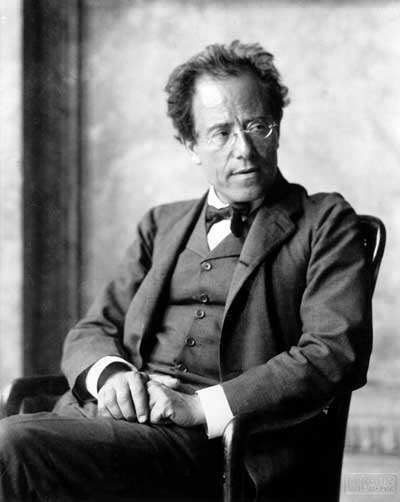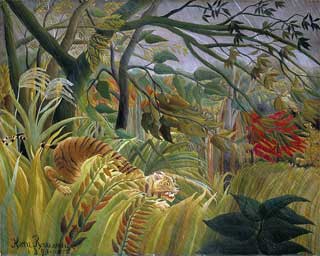Concert
Symphony No. 6
Allegro energico, ma non troppo
Scherzo. Wuchtig
Andante moderator
Finale. Allegro moderato
Boston Philharmonic Orchestra
Benjamin Zander, Music Director
Sanders Theatre, Harvard University
Cambridge, MA
February 21, 2013, 7:30pm
Repeated:
February 23, 2013, 8:00pm (pre-concert talk @ 6:45pm)
Jordan Hall
Boston, MA
February 24, 2013, 3:00pm (pre-concert talk @ 1:45pm)
Sanders Theatre, Harvard University
Cambridge, MA

Photograph by Moritz Nähr
There are Mahler symphonies that have memorable tunes, but this is not one of them. If one listens to this symphony, one can indeed find lush and tonally rich passages, but it is hard to find a place where there is a theme one can latch onto.
This symphony is more like an evolved development that ramifies and unfolds in interesting and sometimes unexpected ways, and, while shaping and reshaping itself, hovers over the expressive border between desperation and hope.
Apparently, Mahler wrote this painful symphony when he was in a quite good frame of mind, between 1903 and 1906, happily married to Alma Schindler – whom he wed in 1902 – and still engaged robustly in his conducting duties at the Vienna Court Opera.
That happy disposition would, however, be short-lived.
In 1907, his four year old daughter with Alma, Maria, would be dead from diphtheria and scarlet fever. As well, that year, Mahler would lose his conducting post at the opera. And, finally, in that same year, he would be diagnosed with terminal heart disease.

with daughters Maria and Anna
This symphony, though written before all of these tragedies occurred, is thought to possess an intuitive foreboding of them.
The symphony is almost an hour and a half long and the BPO played it without intermission. It consists of four movements, the longest of which is the fourth, clocking in at just over half an hour.
The required orchestra is huge, consisting of something like nine horns, six trumpets, cowbells, church bells, a large hammer, and much more additional instrumentation than usual, even for Mahler.
Mahler declared to Alma “I composed you into my symphony” and there are clear passages, especially in the first movement, where the richness of that passion is vividly apparent.
That first movement begins with a gruff, deliberate march.
Soon afterwards, a plaintive beacon shines through. Bucolic meanderings in the winds relax the brusqueness and lead to the explosively broad and passionate Alma theme, full-fledged with strings. The march eventually returns, but seems warmed and shaped by the Alma experience, with slower echoes of her theme weaving in and out of it. But the march gets fervent again and leads to dual tympani, and vivid brass, beckoning through that climax. Yet, again, though, Alma’s theme returns, and with embellishments from the snare drum and a xylophone tremolo, the march becomes infected with passionate warmth.
All of a sudden, one hears cowbells issuing from the balcony, while cosmically searching violins set the landscape beneath. From this new plane, the winds raise a very human voice, and a plaintive horn calls out to a solo violin as the cow bells jingle on.
The give and take of this marche militaire and the romantic theme evolve gradually into a hybrid, which, through a hastening and acceleration fueled by the percussion, leads to a rousing, climactic finish.
And that is just the first movement!
The second movement, a Scherzo, sounds almost exactly like the march in the first movement, except it is now beat in threes.
The same minor key prevails, but there is now, because of the beat, a somewhat more urgent tone. Minor moves occasionally to major with a sense of playfulness, with intermittent accentuations by the xylophone.
The Scherzo gives way to a sweetly playful Trio, with almost a classical restraint that contains itself until it eventually breaks into romantic song. (This is Mahler, after all.)
Delicately reflective, this Trio eventually becomes more urgent, rising almost to a dance fever, winding down to final slowing heartbeats (again, Mahler’s prescience at work), signaled by the deep breaths of the contrabassoon.
The third movement offers a broadly soothing theme, offering tonal questions along the way, but without urgency.
A lovely interlaced duo of english horn and flute is further joined by the French horn, all played with delicacy and nuance. In keeping with the textural, but not thematic, nature of the work, there is a broad exchange of fifths from section to section, followed by a plaintive call of oboe and high flutes.
Finally, a broadly romantic theme with a sweet and hopeful unison emerges, yielding another beacon from oboe and flutes, high and gentle, leading to the delicate and peaceful, yet lush and deeply felt, conclusion.
The very long Finale is a grand exploration marked by three very loud hammer thwacks.
This movement is like a jungle, threateningly dark at times, yet offering embedded islands of light and respite. Though threatening, there is something charmingly atavistic about it as well, as though the wild creatures which inhabit it live in a painting by Henri Rousseau. Indeed, the cowbells reappear, offering a sense of bucolic charm.

“Tiger in a Tropical Storm (Surprised!)” (1891)
National Gallery, London, England
That peacefulness soon yields to an urgency brought in by the cellos, and, eventually, the loud hammer thwacks start to punctuate the landscape, a call for help out of the wilderness.
These thwacks reminded me of Jackson Pollock’s late painting, Blue Poles, which, according to first hand sources, was originally going to look like any other Jackson Pollock action painting, until, in a moment of frustration and despair, Pollock took a two by four, covered it with paint, and slapped it several times across the canvas. Those poles, in their capacity to generate a new focus in the Pollock wilderness, have made that painting one of Pollock’s iconic works.
Similarly, here in the Mahler 6th Symphony, the thwacks, in the middle of a beautiful, but thematically amorphous, symphony, give it a kind of urgent shape and distinctive character.

“Blue Poles: Number 11, 1952”
National Gallery of Australia
Amid these thunderbolt thwacks, the marching theme returns in some form, and there are more cowbells and some church bells.
Finally, the march builds and returns resplendently, but now with a new minor key underfoot. Before the conclusion, the endless sense of searching yields to a third thunderclap and a winding away into what seems like a muddled meandering.
But Mahler’s piece will not end with a whimper. Its meanderings are settled, defined and focused, in an echo of the thwacking thunderclaps, by a final, forceful, cataclysmic note by the ensemble.
This performance was nuanced and beautifully played, with fine work in all of the sections and beautiful solos from all corners.
This represents a wonderful opportunity to hear a performance of this infrequently done piece by one of Boston’s great orchestral ensembles.
– BADMan
Leave a Reply